Haydar Celik
COVID-19 Detection from Respiratory Sounds with Hierarchical Spectrogram Transformers
Jul 19, 2022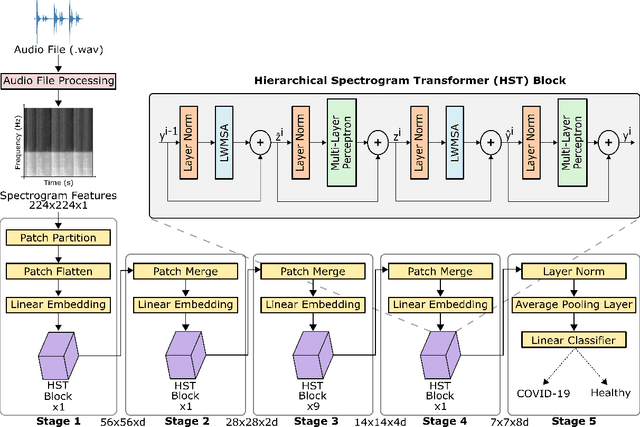
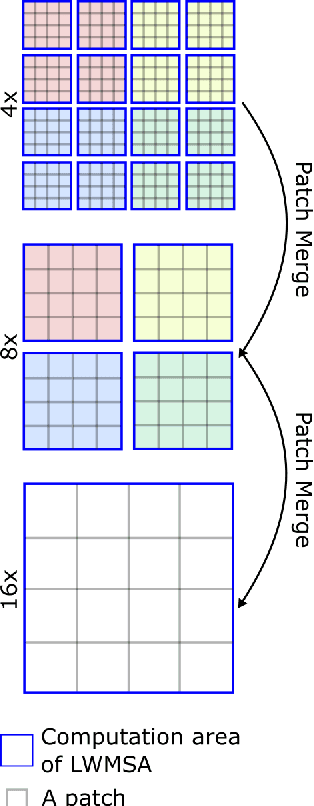
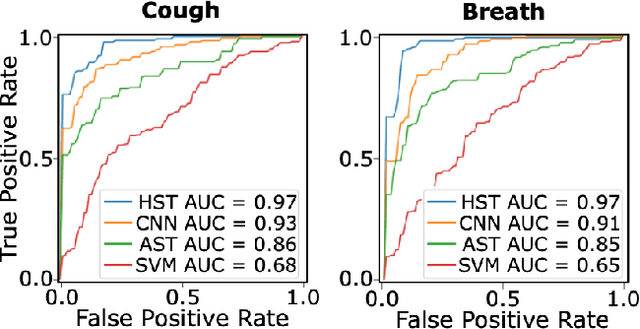
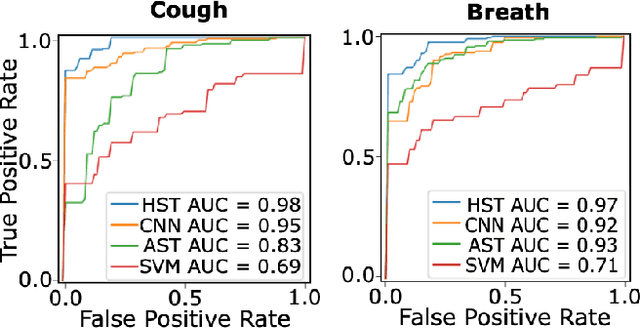
Abstract:Monitoring of prevalent airborne diseases such as COVID-19 characteristically involve respiratory assessments. While auscultation is a mainstream method for symptomatic monitoring, its diagnostic utility is hampered by the need for dedicated hospital visits. Continual remote monitoring based on recordings of respiratory sounds on portable devices is a promising alternative, which can assist in screening of COVID-19. In this study, we introduce a novel deep learning approach to distinguish patients with COVID-19 from healthy controls given audio recordings of cough or breathing sounds. The proposed approach leverages a novel hierarchical spectrogram transformer (HST) on spectrogram representations of respiratory sounds. HST embodies self-attention mechanisms over local windows in spectrograms, and window size is progressively grown over model stages to capture local to global context. HST is compared against state-of-the-art conventional and deep-learning baselines. Comprehensive demonstrations on a multi-national dataset indicate that HST outperforms competing methods, achieving over 97% area under the receiver operating characteristic curve (AUC) in detecting COVID-19 cases.
A Collaborative Computer Aided Diagnosis (C-CAD) System with Eye-Tracking, Sparse Attentional Model, and Deep Learning
Apr 28, 2018



Abstract:There are at least two categories of errors in radiology screening that can lead to suboptimal diagnostic decisions and interventions:(i)human fallibility and (ii)complexity of visual search. Computer aided diagnostic (CAD) tools are developed to help radiologists to compensate for some of these errors. However, despite their significant improvements over conventional screening strategies, most CAD systems do not go beyond their use as second opinion tools due to producing a high number of false positives, which human interpreters need to correct. In parallel with efforts in computerized analysis of radiology scans, several researchers have examined behaviors of radiologists while screening medical images to better understand how and why they miss tumors, how they interact with the information in an image, and how they search for unknown pathology in the images. Eye-tracking tools have been instrumental in exploring answers to these fundamental questions. In this paper, we aim to develop a paradigm shift CAD system, called collaborative CAD (C-CAD), that unifies both of the above mentioned research lines: CAD and eye-tracking. We design an eye-tracking interface providing radiologists with a real radiology reading room experience. Then, we propose a novel algorithm that unifies eye-tracking data and a CAD system. Specifically, we present a new graph based clustering and sparsification algorithm to transform eye-tracking data (gaze) into a signal model to interpret gaze patterns quantitatively and qualitatively. The proposed C-CAD collaborates with radiologists via eye-tracking technology and helps them to improve diagnostic decisions. The C-CAD learns radiologists' search efficiency by processing their gaze patterns. To do this, the C-CAD uses a deep learning algorithm in a newly designed multi-task learning platform to segment and diagnose cancers simultaneously.
Gaze2Segment: A Pilot Study for Integrating Eye-Tracking Technology into Medical Image Segmentation
Aug 10, 2016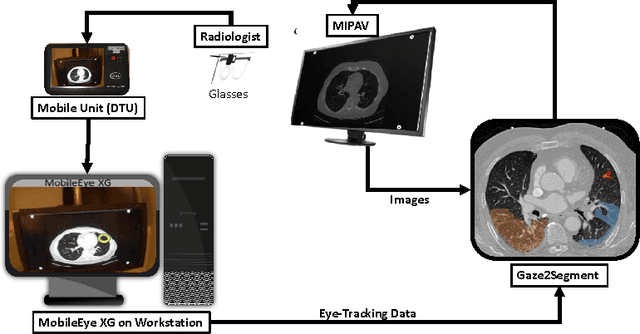
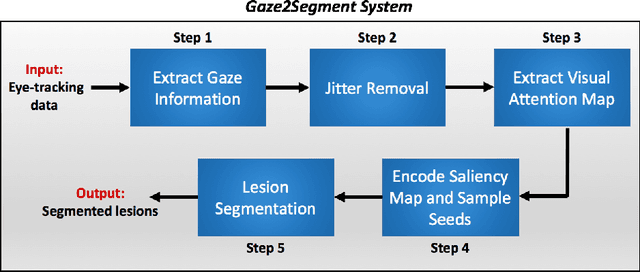
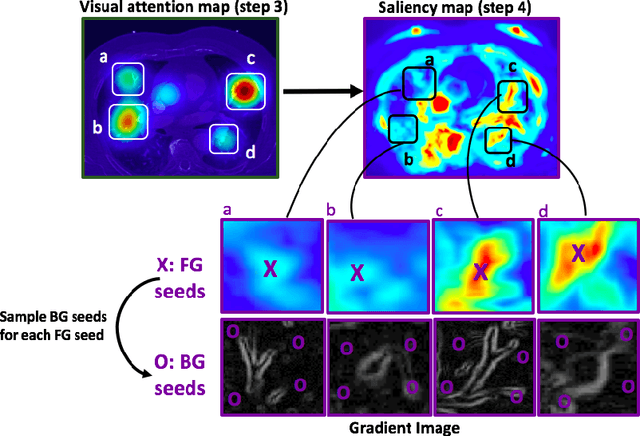
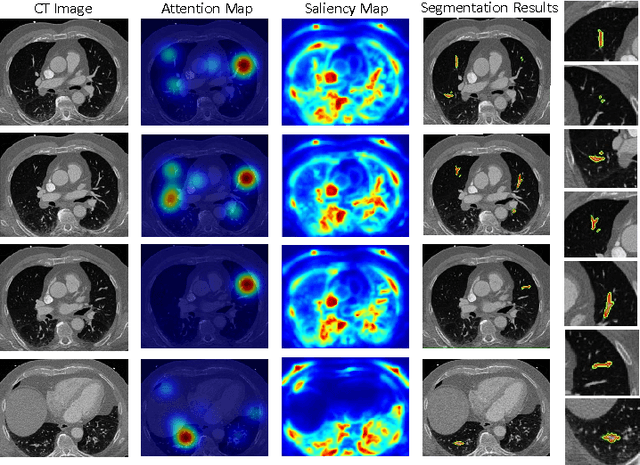
Abstract:This study introduced a novel system, called Gaze2Segment, integrating biological and computer vision techniques to support radiologists' reading experience with an automatic image segmentation task. During diagnostic assessment of lung CT scans, the radiologists' gaze information were used to create a visual attention map. This map was then combined with a computer-derived saliency map, extracted from the gray-scale CT images. The visual attention map was used as an input for indicating roughly the location of a object of interest. With computer-derived saliency information, on the other hand, we aimed at finding foreground and background cues for the object of interest. At the final step, these cues were used to initiate a seed-based delineation process. Segmentation accuracy of the proposed Gaze2Segment was found to be 86% with dice similarity coefficient and 1.45 mm with Hausdorff distance. To the best of our knowledge, Gaze2Segment is the first true integration of eye-tracking technology into a medical image segmentation task without the need for any further user-interaction.
 Add to Chrome
Add to Chrome Add to Firefox
Add to Firefox Add to Edge
Add to Edge